 Your new post is loading...
At the Quantum World Congress recently IonQ announced two new systems (Forte Enterprise and Tempo) intended to be rack-mountable and deployable in a traditional data center. Yesterday, speaking at Tabor Communications HPC and AI on Wall Street conference, the company made a strong pitch for reaching quantum advantage in 2-3 years, using the new systems. If you’ve been following quantum computing, you probably know that deploying quantum computers in the datacenter is a rare occurrence. Access to the vast majority NISQ era computers has been through web portals. The latest announcement from IonQ, along with somewhat similar announcement from neutral atom specialist QuEra in August, and increased IBM efforts (Cleveland Clinic and PINQ2) to selectively place on-premise quantum systems suggest change is coming to the market. IonQ’s two rack-mounted solutions are designed for businesses and governments wanting to integrate quantum capabilities within their existing infrastructure. “Businesses will be able to harness the power of quantum directly from their own data centers, making the technology significantly more accessible and easy to apply to key workflows and business processes,” reported the company. IonQ is calling the new systems enterprise-grade. (see the official announcement.) Snapshot of the new systems: - “IonQ Forte Enterprise brings quantum computing to modern data centers: With a target performance of #AQ 35, IonQ Forte Enterprise is expected to further IonQ’s lead as the provider of the most powerful, commercially available quantum computer in the world. IonQ Forte Enterprise is designed for complex computational problems, including process optimization, quantum machine learning, correlation analysis, and pattern recognition. With today’s announcement, IonQ is streamlining these capabilities into a compact form factor that can be easily deployed across existing data center infrastructures.
- “IonQ Tempo enables commercial advantage capabilities for the most demanding use-cases: IonQ has revealed for the first time new details of its highly anticipated #AQ 64 enterprise-grade system, IonQ Tempo. Tempo is anticipated to be a commercial advantage system capable of delivering substantial business value for today’s use cases. An #AQ 64-based Tempo system would far exceed what can be simulated with classical computers and GPUs, and provide a computational space 536 million times larger than even IonQ Forte Enterprise, an astonishing leap in computational power.”
IonQ reported its Forte Enterprise system will be introduced in 2024 and the Temp on 2025. Speaking at Tabor’s HPC and AI on Wall Street conference, Philip Farah, VP strategic partnerships, and Bob Fletcher, director, enterprise sales, jointly reviewed IonQ’s progress and plans for delivering quantum advantage. It’s thought that financial services will be among the first industry sectors to deploy quantum computers.
CMU physics doctoral student Beka Modrekiladze sees artificial intelligence as the way to unlock its secrets. The magical mystery of quantum mechanics thrills Beka Modrekiladze. The Carnegie Mellon University physics doctoral student sees artificial intelligence as the way to unlock its secrets. "I want to understand what space-time is made of," he said. "Is it fundamental, or is it something else? One of the most important goals in my life is to understand the universe on a deeper level." Quantum gravity is one way that Modrekiladze studies space-time, a model that joins the two concepts into a single idea. "Space-time oscillates, and we can measure this oscillation to see how time slows down or accelerates, and we can detect those waveforms," he said. One challenge is that there is a lot of noise, so researchers rely on looking for waves similar to pre-existing candidates. "That approach was philosophically unsatisfying for me," Modrekiladze said. "To really accelerate science, we have to think beyond our imagination." That's where AI comes in. "The universe doesn't always make sense," Modrekiladze said. "But mathematics helps us to close our eyes and follow its logic to get somewhere new. Mathematics sometimes deletes bias. That's how quantum mechanics was discovered. We followed the mathematics to see that the universe works in an unexpected way. "AI is hyper-mathematics in that sense, because it will push us out of our comfort zone to make even more new discoveries." As a member of Carnegie Mellon's faculty for more than 50 years, Nobel Laureate Herbert "Herb" A. Simon conducted extensive research on human decision-making and problem- solving processes, which led to the creation of computational tools that both simulated and augmented human thinking. Simon's work with Allen Newell led to the invention of computer systems that could learn and adapt — a precursor to the modern-day field of artificial intelligence. "Carnegie Mellon was the only choice for my Ph.D., because it has a really good physics department and it is literally the best at AI in the world," he said. Modrekiladze published a paper in the Journal of High Energy Physics earlier this year on gravitational wave signals from the collision of black holes and compact stars. "It's the ultimate laboratory that the universe can offer," Modrekiladze said about the phenomenon. "The high energies are the perfect place to test our best theories. Being able to study gravitational waves which are the oscillations of space and time itself introduced a new era for astronomy."
Recently, researchers have published an important white paper identifying activities in particle physics where burgeoning quantum-computing technologies could be applied. The paper, authored by experts from CERN, DESY, IBM Quantum and over 30 other organisations, is now available on ArXiv. With quantum-computing technologies rapidly improving, the paper sets out where these could be applied within particle physics, in order to help tackle computing challenges related not only to the Large Hadron Collider’s ambitious upgrade program, but also to other colliders and low energy experiments world-wide. The paper was produced by a working group set up at the first-of-its-kind “QT4HEP” conference, held at CERN last November. Over the last eight months, the 46 people in this working group have worked hard to identify areas where quantum-computing technologies could provide a significant boon. The areas identified relate to both theoretical and experimental particle physics. The paper then maps these areas to “problem formulations” in quantum computing. This is an important step in ensuring that the particle physics community is well positioned to benefit from the massive potential of breakthrough new quantum computers when they come online. “Quantum computing is very promising, but not every problem in particle physics is suited to this mode of computing,” says Alberto Di Meglio, head of the CERN Quantum Technology Initiative (CERN QTI). “It’s important to ensure that we are ready and that we can accurately identify the areas where these technologies have the potential to be most useful for our community.” In terms of theoretical particle physics, the authors identify promising areas related to evolution of the quantum states, lattice-gauge theory, neutrino oscillations, and quantum field theories in general as well. The considered applications include quantum dynamics, hybrid quantum/classical algorithms for static problems in lattice gauge theory, optimisation, and classification. The lead authors of the paper CERN QTI’s Alberto Di Meglio, DESY’s Karl Jansen, and IBM Quantum’s Ivano Tavernelli, state that “with quantum computing we address problems in those areas that are very hard – or even impossible to tackle with classical methods. “In this way,” Jansen says, “we can explore the physical systems to which we still do not have access.” On the experimental side, the authors identify areas related to jet and track reconstruction, extraction of rare signals, for-and-beyond Standard Model problems, parton showers, and experiment simulation. These are then mapped to classification, regression, optimisation, and generation problems. Members of the working group behind this paper will now begin a process of selecting specific use cases from the activities listed in the paper to be taken forward through the CERN’s and DESY’s participation in the IBM Quantum Network, and collaboration with IBM Quantum, under its “100x100 Challenge”. IBM Quantum is long-standing collaborator to CERN QTI and the Center for Quantum Technologies and Applications (CQTA) at DESY.
The arrangement of electrons in matter, known as the electronic structure, plays a crucial role in fundamental but also applied research, such as drug design and energy storage. However, the lack of a simulation technique that offers both high fidelity and scalability across different time and length scales has long been a roadblock for the progress of these technologies. Researchers from the Center for Advanced Systems Understanding (CASUS) at the Helmholtz-Zentrum Dresden-Rossendorf (HZDR) in Görlitz, Germany, and Sandia National Laboratories in Albuquerque, New Mexico, U.S., have now pioneered a machine learning–based simulation method that supersedes traditional electronic structure simulation techniques. Their Materials Learning Algorithms (MALA) software stack enables access to previously unattainable length scales. The work is published in the journal npj Computational Materials. Electrons are elementary particles of fundamental importance. Their quantum mechanical interactions with one another and with atomic nuclei give rise to a multitude of phenomena observed in chemistry and materials science. Understanding and controlling the electronic structure of matter provides insights into the reactivity of molecules, the structure and energy transport within planets, and the mechanisms of material failure. Scientific challenges are increasingly being addressed through computational modeling and simulation, leveraging the capabilities of high-performance computing. However, a significant obstacle to achieving realistic simulations with quantum precision is the lack of a predictive modeling technique that combines high accuracy with scalability across different length and time scales. Classical atomistic simulation methods can handle large and complex systems, but their omission of quantum electronic structure restricts their applicability. Conversely, simulation methods which do not rely on assumptions such as empirical modeling and parameter fitting (first principles methods) provide high fidelity but are computationally demanding. For instance, density functional theory (DFT), a widely used first principles method, exhibits cubic scaling with system size, thus restricting its predictive capabilities to small scales. Hybrid approach based on deep learning The team of researchers now presented a novel simulation method called the Materials Learning Algorithms (MALA) software stack. In computer science, a software stack is a collection of algorithms and software components that are combined to create a software application for solving a particular problem. Lenz Fiedler, a Ph.D. student and key developer of MALA at CASUS, explains, "MALA integrates machine learning with physics-based approaches to predict the electronic structure of materials. It employs a hybrid approach, utilizing an established machine learning method called deep learning to accurately predict local quantities, complemented by physics algorithms for computing global quantities of interest."
A new demonstration involving hundreds of entangled atoms tests Schrödinger’s interpretation of Einstein, Rosen, and Podolsky’s classic thought experiment. In 1935, Einstein, Podolsky, and Rosen (EPR) presented an argument that they claimed implies that quantum mechanics provides an incomplete description of reality [1]. The argument rests on two assumptions. First, if the value of a physical property of a system can be predicted with certainty, without disturbance to the system, then there is an “element of reality” to that property, meaning it has a value even if it isn’t measured. Second, physical processes have effects that act locally rather than instantaneously over a distance. John Bell subsequently proposed a way to experimentally test these “local realism” assumptions [2], and so-called Bell tests have since invalidated them for systems of a few small particles, such as electrons or photons [3]. Now Paolo Colciaghi and colleagues at the University of Basel, Switzerland, have tested EPR’s argument for a larger system comprising clouds of hundreds of atoms [4]. Their results bring into question the validity of EPR’s local realism for mesoscopic massive systems. EPR considered a system of two spatially separated particles, A and B, that have pairs of non-commuting observables, such as their position and momentum. The systems are prepared so that the particles’ positions are correlated and their momenta are anti-correlated. This relationship between observables means that an experimentalist should be able to determine the position or momentum of particle A with certainty by making the appropriate measurement of B. Importantly, the system is set up so that the particles are “space-like separated,” meaning there can be no disturbance of A because of a measurement at B. Assuming local realism being true, EPR concluded that the particles’ positions and momenta are both simultaneously well-defined. But quantum mechanics does not allow simultaneous, precisely defined values for both position and momentum. EPR proposed to resolve this paradox by suggesting that quantum mechanics is incomplete, implying that a full theory would include what physicists now term local hidden variables—a possibility that Bell tests have since ruled out [2, 3]. Whereas most Bell tests have been conducted on pairs of individual particles, Colciaghi and colleagues use clouds of several hundred rubidium-87 atoms. They start by preparing a single Bose-Einstein condensate in a trap and engineer an interaction to entangle the condensate’s atoms. Once released from the trap, the condensate expands to form two entangled clouds separated by up to 100 µm. In order to test the paradox, it is necessary to measure two non-commuting observables. Instead of using position and momentum as envisaged by EPR, Colciaghi and colleagues use “pseudospins”—a pair of quantum states that, like spin, constitute a two-level system. These “spins” are defined by two hyperfine levels, with the spin of each cloud determined by the number of atoms in one level minus the number of atoms in the other level. To measure the first of the non-commuting spin observables, the atoms in each level are counted directly. The second, complementary spin observable is measured using a pulse that interacts with the atoms prior to the count. EPR tests using atomic ensembles have been conducted before [5–7], but here there is an important difference: In this experiment, the choice of measurement settings—meaning which of the two non-commuting spins is measured—is made independently for each cloud. This independence is essential for a genuine EPR paradox; without it we cannot rule out an influence between the systems [8]. Colciaghi and colleagues probe EPR correlations by determining the errors in inferring the spin of cloud A from measurements of the spin of cloud B, first when the pulses are absent, and then again when the pulses are applied for both A and B. While not zero, the product of these errors is small relative to the lower bound of the Heisenberg uncertainty product measured in the experiment. The paradox is therefore confirmed, since the non-commuting spins for A can be inferred with a precision not quantifiable by any local quantum state for A [9]. Yet, if these correlations are the result of a measurement made at B somehow affecting the outcome at A by nonclassical means, then the experiment, which involves a large number of atoms, is intriguingly macroscopic. The researchers then make a very revealing modification to their experiment. In 1935, Schrödinger responded to EPR’s argument with his famous example of the cat in a superposition state [10]. Less well known is his proposal of a situation in which the measurement settings are adjusted so that two complementary variables are measured simultaneously, “one by direct, the other by indirect measurement.” Schrödinger pondered whether the values for both variables would be precisely determined for this choice of measurement settings (when the settings are fixed but prior to the measurement being finalized), and he questioned whether this determination of values would be compatible with quantum mechanics. Colciaghi and colleagues create such a scenario by manipulating the pulses that determine which spin is measured: Keeping the setting of cloud B fixed, they change the setting of cloud A. The researchers were able to show that they can measure the value of one variable of cloud A directly, while inferring the value of the complementary variable indirectly from a measurement on cloud B. Furthermore, by adjusting the setting of A again, they show how the correlation with the measurement at B is regained. This illustrates that changing the setting of cloud A does not change the correctness of the prediction made for the complementary variable at A by measuring B. Does this finding imply that there is an element of reality for the outcome of the measurement at A once the setting at B is fixed? For the direct measurement of each variable, the system is prepared for the counting of atoms in the two levels after any interaction of the atoms with the pulses, when the measurement settings are determined. Are the atoms that would be counted already in those levels, whether or not the count takes place? The mesoscopic nature of the experiment would appear to strengthen Schrödinger’s argument: It seems that the values of the observables would be fixed once the measurement settings are determined but before the measurements are finalized by counting the atoms.
Detecting nuclear reactors is important for nonproliferation of nuclear arms and nuclear power in general. The nearly 100 researchers in the SNO+ Collaboration working at SNOLAB science demonstrated that a large, water-filled detector can identify neutrinos from a reactor hundreds of kilometers away. Neutrinos are subatomic particles that interact with matter extremely weakly. They are produced in many types of radioactive decays, including in the core of the Sun and in nuclear reactors. Neutrinos are also impossible to block—they easily travel from the core of a nuclear reactor to a detector far away, and even through the Earth itself. Detecting the tiny signals from neutrinos therefore requires huge devices that are extremely sensitive. The SNO+ experiment has just shown that a detector filled with simple water can still detect reactor neutrinos, even though the neutrinos create only tiny signals in the detector.
The SNO+ measurement shows that distant nuclear reactors can be observed and monitored with something as simple and inexpensive as water. Reactors cannot shield the neutrinos they produce. This means SNO+’s measurement is a proof of the idea that such water detectors could play a role in ensuring nuclear non-proliferation. Like SNO+, such detectors would still need to be very clean of any radioactivity, large (SNO+ contains 1,000 tons of water), and able to detect the tiny amount of light that the neutrinos produce. The use of water, however, means that very large detectors are possible and a real option for “seeing” even very distant reactors.
Scientists long thought that the tiny signals (just 10-20 photons) created by reactor neutrinos in a water detector would make it impossible to detect those neutrinos, particularly when the detector was far away from the reactor and the rate of these signals was very low. By ensuring that the detector was clean from even trace amounts of radioactivity, and by having an energy threshold lower than any water detector ever built, SNO+ was able to see these signals and show that they came from nuclear reactors at least 240 kilometers (150 miles) away. The measurement was still quite difficult, as backgrounds (fake events) from residual radioactivity, and from neutrinos created in the atmosphere by cosmic rays, needed to be identified and removed.
Water detectors have several advantages. They are inexpensive and can be very large, making them useful for monitoring reactors across international borders. Improvements to such monitoring, including using water-based liquid scintillator or “loading” the water with gadolinium, both of which would boost the signal size, are being tested by other collaborations. This work is from the SNO+ Collaboration, an international collaboration of roughly 100 scientists from the United States (the University of Pennsylvania, the University of California at Berkeley and Lawrence Berkeley National Laboratory, the University of California at Davis, Brookhaven National Laboratory, Boston University, and the University of Chicago), Canada, the United Kingdom, Portugal, Germany, China, and Mexico. SNO+ is located in SNOLAB, the Canadian underground laboratory.
Imagine using your cellphone to control the activity of your own cells to treat injuries and disease. It sounds like something from the imagination of an overly optimistic science fiction writer. But this may one day be a possibility through the emerging field of quantum biology. Over the past few decades, scientists have made incredible progress in understanding and manipulating biological systems at increasingly small scales, from protein folding to genetic engineering. And yet, the extent to which quantum effects influence living systems remains barely understood. Quantum effects are phenomena that occur between atoms and molecules that can't be explained by classical physics. It has been known for more than a century that the rules of classical mechanics, like Newton's laws of motion, break down at atomic scales. Instead, tiny objects behave according to a different set of laws known as quantum mechanics. For humans, who can only perceive the macroscopic world, or what's visible to the naked eye, quantum mechanics can seem counterintuitive and somewhat magical. Things you might not expect happen in the quantum world, like electrons "tunneling" through tiny energy barriers and appearing on the other side unscathed, or being in two different places at the same time in a phenomenon called superposition. Research in quantum mechanics is usually geared toward technology. However, and somewhat surprisingly, there is increasing evidence that nature—an engineer with billions of years of practice—has learned how to use quantum mechanics to function optimally. If this is indeed true, it means that our understanding of biology is radically incomplete. It also means that we could possibly control physiological processes by using the quantum properties of biological matter. Quantumness in biology is probably real Researchers can manipulate quantum phenomena to build better technology. In fact, you already live in a quantum-powered world: from laser pointers to GPS, magnetic resonance imaging and the transistors in your computer—all these technologies rely on quantum effects. In general, quantum effects only manifest at very small length and mass scales, or when temperatures approach absolute zero. This is because quantum objects like atoms and molecules lose their "quantumness" when they uncontrollably interact with each other and their environment. In other words, a macroscopic collection of quantum objects is better described by the laws of classical mechanics. Everything that starts quantum dies classical. For example, an electron can be manipulated to be in two places at the same time, but it will end up in only one place after a short while—exactly what would be expected classically. In a complicated, noisy biological system, it is thus expected that most quantum effects will rapidly disappear, washed out in what the physicist Erwin Schrödinger called the "warm, wet environment of the cell." To most physicists, the fact that the living world operates at elevated temperatures and in complex environments implies that biology can be adequately and fully described by classical physics: no funky barrier crossing, no being in multiple locations simultaneously. Chemists, however, have for a long time begged to differ. Research on basic chemical reactions at room temperature unambiguously shows that processes occurring within biomolecules like proteins and genetic material are the result of quantum effects. Importantly, such nanoscopic, short-lived quantum effects are consistent with driving some macroscopic physiological processes that biologists have measured in living cells and organisms. Research suggests that quantum effects influence biological functions, including regulating enzyme activity, sensing magnetic fields, cell metabolism and electron transport in biomolecules.
Richard Feynman’s path integral is a powerful prediction machine and a philosophy. Physicists still struggle to figure out how to use it, and what it means. The most powerful formula in physics starts with a slender S, the symbol for a sort of sum known as an integral. Further along comes a second S, representing a quantity known as action. Together, these twin S’s form the essence of an equation that is arguably the most effective diviner of the future yet devised. The oracular formula is known as the Feynman path integral. As far as physicists can tell, it precisely predicts the behavior of any quantum system—an electron, a light ray, or even a black hole. The path integral has racked up so many successes that many physicists believe it to be a direct window into the heart of reality. “It’s how the world really is,” said Renate Loll, a theoretical physicist at Radboud University in the Netherlands. But the equation, although it graces the pages of thousands of physics publications, is more of a philosophy than a rigorous recipe. It suggests that our reality is a sort of blending—a sum—of all imaginable possibilities. But it does not tell researchers exactly how to carry out the sum. So physicists have spent decades developing an arsenal of approximation schemes for constructing and computing the integral for different quantum systems. The approximations work well enough that intrepid physicists like Loll are now pursuing the ultimate path integral: one that blends all conceivable shapes of space and time and produces a universe shaped like ours as the net result. But in this quest to show that reality is indeed the sum of all possible realities, they face deep confusion about which possibilities should enter the sum. All Roads Lead to One Quantum mechanics really got off the ground in 1926 when Erwin Schrödinger devised an equation describing how the wavelike states of particles evolve from moment to moment. The next decade, Paul Dirac advanced an alternative vision of the quantum world. His was based on the venerable notion that things take the path of “least action” to get from A to B—the route that, loosely speaking, takes the least time and energy. Richard Feynman later stumbled upon Dirac’s work and fleshed out the idea, unveiling the path integral in 1948. The heart of the philosophy is on full display in the quintessential quantum mechanics demonstration: the double-slit experiment. Physicists fire particles at a barrier with two slits in it and observe where the particles land on a wall behind the barrier. If particles were bullets, they’d form a cluster behind each slit. Instead, particles land along the back wall in repeating stripes. The experiment suggests that what moves through the slits is actually a wave representing the particle’s possible locations. The two emerging wavefronts interfere with each other, producing a series of peaks where the particle might end up being detected. Original story reprinted with permission from Quanta Magazine, an editorially independent publication of the Simons Foundation whose mission is to enhance public understanding of science by covering research developments and trends in mathematics and the physical and life sciences.
On Dec. 5, 2022, the National Ignition Facility (NIF) launched “The Age of Ignition” with an experiment that for the first time produced more energy from a fusion reaction than the energy needed to spark the reaction, a condition known as ignition. This series of articles explains how NIF made scientific history and what it means for science, national security, and the promise of clean, safe, and abundant energy. The graphic shows a high-resolution 3D HYDRA capsule simulation of a June 2017 NIF shot. The spherical contour surface shows the ablation front colored by ion temperature. The cutaway view shows density on the right where the capsule shell contains the hot spot. The jet from the fill tube is visible near the equator. Ion temperature is shown on the left (Credit: Marty Marinak).
Black holes exist in our universe. That’s widely accepted today. Physicists have detected the X-rays emitted when black holes feed, analyzed the gravitational waves from black hole collisions and even imaged two of these behemoths. But mathematician Elena Giorgi of Columbia University studies black holes in a different way. “Black holes are mathematical solutions to the Einstein equation,” Giorgi says — the “master equation” that is the basis of the general theory of relativity. She and other mathematicians seek to prove theorems about these solutions and otherwise probe the math of general relativity. Their goal: unlock unsuspected truths about black holes or verify existing suspicions. Within general relativity, “one can understand clean mathematical statements and study those statements, and they can give an unambiguous answer within that theory,” says Christoph Kehle, a mathematician at ETH Zurich’s Institute for Theoretical Studies. Mathematicians can solve equations that have bearing on questions about the nature of black holes’ formation, evolution and stability. Last year, in a paper posted online at arXiv.org, Giorgi and colleagues settled a long-standing mathematical question about black hole stability. A stable black hole, mathematically speaking, is one that if poked, nudged or otherwise disturbed will eventually settle back into being a black hole. Like a rubber band that has been stretched and then released, the black hole doesn’t rip apart, explode or cease to exist, but returns to something like its former self. Black holes seem to be physically stable — otherwise they couldn’t endure in the universe — but proving it mathematically is a different beast. And a necessary feat, Giorgi says. If black holes are stable, as researchers presume, then the math describing them had better reflect that stability. If not, something is wrong with the underlying theory. “Most of my work,” Giorgi says, “is about proving things that we already expected to be true.” Mathematics has a history of big contributions in the realm of black holes. In 1916, Karl Schwarzschild published a solution to Einstein’s equations for general relativity near a single spherical mass. The math showed a limit to how small a mass could be squeezed, an early sign of black holes. More recently, British mathematician Roger Penrose won the 2020 Nobel Prize in physics for his calculations showing that black holes were real-world predictions of general relativity. In a landmark paper published in 1965, Penrose described how matter could collapse to form a black hole with a singularity at its center.
An international team led by Lancaster University has discovered how electrons can slither rapidly to-and-fro across a quantum surface when driven by external forces. The research, published in Physical Review B, has enabled the visualization of the motion of electrons on liquid helium for the first time. The experiments, carried out in Riken, Japan, by Kostyantyn Nasyedkin (now at Oak Ridge National Laboratory, U.S.) in the lab of Kimitoshi Kono (now in Taiwan at Yang Ming Chiao Tung University) detected unusual oscillations whose frequencies varied in time. Although it was unclear how the electrons were moving in the darkness and extreme cold at the bottom of the cryostat, it was evident that the time-variations were much like those seen in living systems. Prof. Kono said, "At very low temperatures, the surface of liquid helium is an exceptionally slippery place. Interesting things happen there, and it is important because of the potential for quantum computing using electrons on the helium surface. Such electrons move very easily because, with a slippery surface below and a vacuum above, there is nothing to slow them down." The Riken data were analyzed at Lancaster University using methods developed by Prof. Aneta Stefanovska and her group, mainly for biological applications. Lancaster Ph.D. student Hala Siddiq (now at Jazan University, Saudi Arabia) applied these methods. She and her principal supervisor Prof. Stefanovska interpreted the results in collaboration with Riken's team and Lancaster experts in low temperature physics, Dmitry Zmeev, Yuri Pashkin and Peter McClintock. The work has enabled the electrons' motion to be visualized, showing how they slide around in part-circular and part-radial patterns of motion in the vacuum above the liquid surface. An additional complication revealed by Siddiq's analysis is that the surface itself is moving gently in up-and-down vertical motion. Moreover, her results indicate a combination of quantum and classical dynamics. Prof. Stefanovska said, "Appreciation of these features will be important for practical applications across wide areas of physics, life sciences, and even sociology. Namely, they provide a paradigmatic example for the physics of non-isolated systems and for the mathematics of non-autonomous systems. Moreover, the experimental model can be used to study properties of living systems, and similar technical or societal systems, in a very controlled way."
Atmospheric muons and neutrinos are the most abundant signals detected in IceCube. They are produced in cosmic-ray-induced air showers in the Earth’s atmosphere. Cosmic rays are high-energy protons and heavier nuclei traveling through space. When these cosmic rays reach Earth and collide with atoms in the atmosphere, they create an avalanche-like cascade of secondary particles called an air shower. The production of atmospheric neutrinos and muons in high-energy particle interactions depends on the properties of the Earth’s atmosphere and, thus, its seasonal change in temperature. Although seasonal variations for atmospheric muons have been previously measured, this had not yet been achieved for atmospheric neutrinos. In a paper submitted to The European Physical Journal C, the IceCube Collaboration investigated the temperature dependence of the atmospheric muon neutrino flux. The collaborators report a significant observation of a correlation between the rate of neutrinos spanning gigaelectronvolt to petaelectronvolt energies detected by the IceCube Neutrino Observatory—a gigaton-scale neutrino detector operating at the South Pole—and atmospheric temperatures of the stratosphere. While at first glance these measurements establish IceCube as a gigantic atmospheric thermometer, they scientifically open a new view on the physics of high-energy particle interactions in air showers. When a neutrino interacts with a molecule of ice in the detector, it creates a secondary charged particle that produces Cherenkov light, which is then picked up by the optical sensors. Scientists are then able to reconstruct each detected neutrino and determine its direction. To look at the temperature dependence of atmospheric neutrinos, the collaborators determined the atmospheric conditions for the respective time and direction of each neutrino event from a sample of 260,000 neutrinos detected by IceCube over a 6-year period. They also used a temperature dataset provided by the Atmospheric Infrared Sounder (AIRS) on NASA’s Aqua satellite, which provides daily coverage of the global distribution of atmospheric temperatures. The atmospheric neutrino rate measured by IceCube was then correlated with an average of the atmospheric temperature called effective temperature. “We observed a highly significant correlation between the temperature and the neutrino rate, but at the same time there is a slight tension between these results and the results we expect from current air shower models,” says Jakob Böttcher, a physics PhD student at RWTH Aachen University and study lead. “We measured a 3.5% change in the atmospheric muon neutrino flux for the observed 10% seasonal change of the effective atmospheric temperature.”
Our universe could be the mirror image of an antimatter universe extending backwards in time before the Big Bang. So claim physicists in Canada, who have devised a new cosmological model positing the existence of an “antiuniverse” which, paired to our own, preserves a fundamental rule of physics called CPT symmetry. The researchers still need to work out many details of their theory, but they say it naturally explains the existence of dark matter. Standard cosmological models tell us that the universe – space, time and mass/energy – exploded into existence some 14 billion years ago and has since expanded and cooled, leading to the progressive formation of subatomic particles, atoms, stars and planets. However, Neil Turok of the Perimeter Institute for Theoretical Physics in Ontario reckons that these models’ reliance on ad-hoc parameters means they increasingly resemble Ptolemy’s description of the solar system. One such parameter, he says, is the brief period of rapid expansion known as inflation that can account for the universe’s large-scale uniformity. “There is this frame of mind that you explain a new phenomenon by inventing a new particle or field,” he says. “I think that may turn out to be misguided.” Instead, Turok and his Perimeter Institute colleague Latham Boyle set out to develop a model of the universe that can explain all observable phenomena based only on the known particles and fields. They asked themselves whether there is a natural way to extend the universe beyond the Big Bang – a singularity where general relativity breaks down – and then out the other side. “We found that there was,” he says. The answer was to assume that the universe as a whole obeys CPT symmetry. This fundamental principle requires that any physical process remains the same if time is reversed, space inverted and particles replaced by antiparticles. Turok says that this is not the case for the universe that we see around us, where time runs forward as space expands, and there’s more matter than antimatter. Instead, says Turok, the entity that respects the symmetry is a universe–antiuniverse pair. The antiuniverse would stretch back in time from the Big Bang, getting bigger as it does so, and would be dominated by antimatter as well as having its spatial properties inverted compared to those in our universe – a situation analogous to the creation of electron–positron pairs in a vacuum, says Turok. Turok, who also collaborated with Kieran Finn of Manchester University in the UK, acknowledges that the model still needs plenty of work and is likely to have many detractors. Indeed, he says that he and his colleagues “had a protracted discussion” with the referees reviewing the paper for Physical Review Letters – where it was eventually published – over the temperature fluctuations in the cosmic microwave background. “They said you have to explain the fluctuations and we said that is a work in progress. Eventually they gave in,” he says.
|
Researchers led by Chang Liu of PPPL have unveiled a promising approach to mitigating damaging runaway electrons created by disruptions in tokamak fusion devices. Key to the approach was harnessing a unique type of plasma wave that bears the name of astrophysicist Hannes Alfvén, a 1970 Nobel laureate. Alfvén waves have long been known to loosen the confinement of high-energy particles in tokamak reactors, allowing some to escape and reducing the efficiency of the doughnut-shaped devices. However, the new findings by Chang Liu and researchers at General Atomics, Columbia University and PPPL uncovered beneficial results in the case of runaway electrons. Remarkably circular The scientists found that such loosening can diffuse or scatter high-energy electrons before they can grow into avalanches that damage tokamak components. This process was determined to be remarkably circular: The runaways create instabilities that give rise to Alfvén waves that keep the avalanche from forming. "These discoveries provide a comprehensive explanation for the direct observation of Alfvén waves in disruption experiments," said Liu, a staff researcher at PPPL and lead author of a paper that details the results in Physical Review Letters. "The findings establish a distinct link between these modes and the generation of runaway electrons." Researchers derived a theory for the remarkable circularity of these interactions. The results aligned well with runaways in experiments on the DIII-D National Fusion Facility, a DOE tokamak that General Atomics operates for the Office of Science. Tests of the theory also proved positive on the Summit supercomputer at Oak Ridge National Laboratory. "Chang Liu's work shows that the runaway electron population size can be controlled by instabilities driven by the runaway electrons themselves," said Felix Parra Diaz, head of the Theory Department at PPPL. "His research is very exciting because it might lead to tokamak designs that naturally mitigate runaway electron damage through inherent instabilities."
Creating brain-like computers with minimal energy requirements would revolutionize nearly every aspect of modern life. Funded by the Department of Energy, Quantum Materials for Energy Efficient Neuromorphic Computing ( Q-MEEN-C) — a nationwide consortium led by the University of California San Diego — has been at the forefront of this research. UC San Diego Assistant Professor of Physics Alex Frañó is co-director of Q-MEEN-C and thinks of the center’s work in phases. In the first phase, he worked closely with President Emeritus of University of California and Professor of Physics Robert Dynes, as well as Rutgers Professor of Engineering Shriram Ramanathan. Together, their teams were successful in finding ways to create or mimic the properties of a single brain element (such as a neuron or synapse) in a quantum material. Now, in phase two, new research from Q-MEEN-C, published in Nano Letters, shows that electrical stimuli passed between neighboring electrodes can also affect non-neighboring electrodes. Known as non-locality, this discovery is a crucial milestone in the journey toward new types of devices that mimic brain functions known as neuromorphic computing. Like many research projects now bearing fruit, the idea to test whether non-locality in quantum materials was possible came about during the pandemic. Physical lab spaces were shuttered, so the team ran calculations on arrays that contained multiple devices to mimic the multiple neurons and synapses in the brain. In running these tests, they found that non-locality was theoretically possible. "In the brain it’s understood that these non-local interactions are nominal — they happen frequently and with minimal exertion,” stated Frañó, one of the paper’s co-authors. “It’s a crucial part of how the brain operates, but similar behaviors replicated in synthetic materials are scarce. When labs reopened, they refined this idea further and enlisted UC San Diego Jacobs School of Engineering Associate Professor Duygu Kuzum, whose work in electrical and computer engineering helped them turn a simulation into an actual device. This involved taking a thin film of nickelate — a “quantum material” ceramic that displays rich electronic properties — inserting hydrogen ions, and then placing a metal conductor on top. A wire is attached to the metal so that an electrical signal can be sent to the nickelate. The signal causes the gel-like hydrogen atoms to move into a certain configuration and when the signal is removed, the new configuration remains.
A 40-year-old debate about charm quarks in protons may have been settled by a new machine-learning analysis of data from the Large Hadron Collider (LHC) at CERN and other facilities. However, not all particle physicists agree with this assessment. For decades, physicists have debated whether protons contain what are known as intrinsic charm quarks. Quantum chromodynamics (QCD), the theory of the strong nuclear force, tells us that protons consist of two up quarks and a down quark bound together by force carriers called gluons. But it also predicts that protons, like neutrons or any other hadron, contain a host of other quark–antiquark pairs. Large numbers of these additional particles are known to be generated when gluons are accelerated during high-energy collisions between protons, just as electromagnetic theory tells us that photons are given off when charged particles accelerate. But what is less clear is the extent to which there could be additional quarks within the protons and neutrons to begin with – so-called intrinsic quarks that contribute to the hadrons’ quantum wavefunctions. Heavier than protons Scientists agree on the existence of intrinsic strange quarks, given that strange quarks have a far smaller mass than protons. However, there continues to be uncertainty about the existence and possible contribution of intrinsic charm quarks. These quarks are heavier than protons, but only by a small amount – leaving open the possibility that they provide a fairly small but nevertheless observable component to a proton’s mass. While some researchers have concluded that charm quarks can provide no more than 0.5% of a proton’s momentum, others have instead found that a contribution of up to 2% is possible. In the latest work, the NNPDF Collaboration – made up of physicists from the University of Milan, the Free University of Amsterdam and the University of Edinburgh – says it has found “unambiguous evidence” that intrinsic charm quarks do indeed exist. It has done so by drawing on reams of collision data from the LHC and elsewhere that it previously used to work out what are known as parton distribution functions (PDFs), which they call NNPDF4.0. Point-like particles Parton is a generic term to describe point-like particles within a hadron, proposed by Richard Feynman in the 1960s to analyse particle collisions and is now equivalent to a quark or gluon. Because the momentum, spin and other properties of partons are determined by the strong force under conditions of very large coupling, their values cannot be calculated using the approximations possible with perturbative QCD. However, by studying the kinematics of hadron collisions it is possible to build up probability distributions showing the odds that a parton will have a certain fraction of a hadron’s momentum at a particular scale. The new research involved calculating a charm quark’s PDF by considering the momentum that it and the three lightest quarks – up, down and strange – contribute to a colliding proton in the scattering process. They then used perturbative QCD – approximating strong interactions by using either the first two or three terms in an expansion of the strong coupling expression – to convert this PDF into one consisting of radiative components from only the lightest three quarks. As they point out, stripped of the charm quark’s own radiative component this new PDF would comprise only intrinsic charm. Doing so using neural networks to best match experimental data with the shape and magnitude of PDFs, they conclude that intrinsic charm quarks definitely exist. Although they work out that intrinsic charm contributes less than 1% of proton momentum, its associated PDF strongly resembles that expected from theory – a peak at a momentum fraction of around 0.4 (the tiny probabilities involved meaning integration yields a small total) while tailing off rapidly at small fractions. It also closely matches the PDFs worked out from other collision data – specifically, recent results involving the production of Z bosons at the LHCb experiment and much earlier data from CERN’s European Muon Collaboration (EMC).
A search for oscillations in the frequencies of optical clocks has come up empty, implying new bounds on ultralight dark matter particles. At the extreme end of the dark matter mass range lies ultralight bosonic dark matter (UBDM), which is expected to behave like a sea of light-year-long waves. One way to detect this highly extended dark matter is to look for small oscillations in fundamental constants, such as the fine structure constant. A new experiment using an optical clock made of a single ion has set the tightest constraints so far on UBDM candidates [1]. A sea of UBDM particles is predicted to have an influence on fundamental quantities, such as the electron charge or quark masses. The wave motion of the sea would cause this influence to vary over time, leading to tiny oscillations in fundamental constants. To search for these oscillations, researchers have previously used high-precision optical clocks, whose frequencies depend on fundamental constants but in atom-specific ways. By comparing two different clock frequencies, past work has placed strong limits on UBDM models (see Synopsis: Optical Clocks Join the Hunt for Dark Matter). To up the ante, Nils Huntemann from the National Metrology Institute (PTB) of Germany and colleagues performed a UBDM search with ytterbium, whose clock frequencies are especially sensitive to changes in the fine structure constant. The team’s primary experiment involved a single trapped ytterbium ion, which has two separate clock frequencies. The researchers looked for a UBDM signal by measuring both frequencies in an alternating sequence. This single-ion setup might be of interest for future space missions that could explore the UBDM density near the Sun, Huntemann says. The team also compared the ytterbium clock to a strontium clock. Together, the data offer world-leading constraints on UBDM in the mass range of 10−24 to 10−17 eV/c2.
Scientists have used cesium atoms on a solid-state semiconductor to create artificial atoms and create synthetic molecules. Studying the quantum properties of matter is challenging due to many factors, such as cost, technical complexity, the need for specialized equipment, and the delicate nature of quantum systems. Classical computers and classical systems do not have the capacity to simulate the intricate world of quantum mechanics. Quantum simulators allow scientists to study quantum systems and discover new materials, properties, and phenomena previously unknown. Quantum simulators can be quantum computers or physical systems which are used to probe matter at the tiniest scales. Now, a team of scientists has now developed a solid-state quantum simulator to emulate molecular orbitals. The research group, led by Alexander Khajetoorians from Radboud University in the Netherlands, used the quantum simulator to create synthetic benzene using artificial atoms. Creating artificial atoms The team chose to create artificial cesium atoms. The first step was choosing indium antimonide (InSb) as the substrate. InSb is a narrow band gap semiconductor that provides the necessary conductivity, surface confinement, and decoupling from the bulk material to create artificial atoms and study their behavior effectively. Then the team used scanning tunneling microscopy and spectroscopy techniques to create surface confinements of electrons on the semiconductor surface. In simple terms, they confined the electrons to specific energy levels or states on the semiconductor surface. The next step was to localize the cesium atoms. They used highly electropositive, or electron-releasing, cesium atoms on the semiconductor surface. The cesium atoms released electrons into a bound state in the semiconductor bandgap, forming a 2D electron gas. The 2D electron gas did not couple strongly with the bulk material, implying that the behavior and properties of the 2D electron gas were relatively independent and distinct from the properties of the bulk material. This allowed them to study and manipulate the artificial atoms and molecular structures formed by the cesium atoms. Finally, they arranged the cesium atoms into localized states such that the structure looked like an atom without a nucleus or a cesium ring. These cesium rings exhibited electromagnetic potentials similar to those between real atoms.
The nuclei of atoms are made up of protons and neutrons, collectively referred to as nucleons. Nucleons in turn consist of quarks and gluons. Understanding how those inner building blocks are distributed within nuclei can reveal how large protons and neutrons appear when probed at high energy. This work used comparisons between model calculations and new precision data from collisions of heavy ions (containing many protons and neutrons) to access the distribution of gluons and predict the size of the proton. Researchers now at Brookhaven Laboratory found that gluons were less smoothly distributed than they expected.
Identifying and precisely measuring factors that are sensitive to nucleon size will help physicists more accurately describe the quark-gluon plasma (QGP). This is a hot, dense form of nuclear matter created when individual protons and neutrons “melt” in heavy ion collisions, mimicking the conditions of the early universe. This knowledge can eliminate significant uncertainties about the initial state of the produced QGP. Knowing more about the initial state of QGP provides input for the model calculations that scientists use to infer the viscosity and other properties of the QGP. The results also add to measurements of proton size based on the distribution of quarks inside the proton.
It may be hard to imagine that the debris of violent heavy ion collisions—which dissolve the boundaries of protons and neutrons and produce thousands of new particles—can be used to gain detailed insight into the properties of nucleons. New advances in experimental methods along with improved theoretical modeling have made it possible. Based on a state-of-the-art model for the colliding nuclei and the hydrodynamic evolution of the quark-gluon plasma produced in the collision, this work demonstrates that specific observables are strongly sensitive to the size of the protons and neutrons inside the colliding nuclei.
Comparison of the model with data from experiments also indicates that the gluon distribution inside protons and neutrons is rather lumpy—not as smooth and spherical as modeled using naïve assumptions. Current and future measurements using collisions of different nuclei at the Relativistic Heavy Ion Collider (RHIC), a Department of Energy (DOE) user facility at Brookhaven National Laboratory, and the Large Hadron Collider (LHC) at CERN, along with a sophisticated theoretical program, will provide more detailed insight into the gluon distribution inside protons and neutrons, in and outside of heavy nuclei, and how it behaves with changing collision energy. This fundamentally important information will be explored with even higher precision at the Electron-Ion Collider to be built at Brookhaven.
Quantum dots in semiconductors such as silicon or gallium arsenide have long been considered hot candidates for hosting quantum bits in future quantum processors. Scientists at Forschungszentrum Jülich and RWTH Aachen University have now shown that bilayer graphene has even more to offer here than other materials. The double quantum dots they have created are characterized by a nearly perfect electron-hole-symmetry that allows a robust read-out mechanism -- one of the necessary criteria for quantum computing. The results were published in the journal Nature. The development of robust semiconductor spin qubits could help the realization of large-scale quantum computers in the future. However, current quantum dot based qubit systems are still in their infancy. In 2022, researchers at QuTech in the Netherlands were able to create 6 silicon-based spin qubits for the first time. With graphene, there is still a long way to go. The material, which was first isolated in 2004, is highly attractive to many scientists. But the realization of the first quantum bit has yet to come. "Bilayer graphene is a unique semiconductor," explains Prof. Christoph Stampfer of Forschungszentrum Jülich and RWTH Aachen University. "It shares several properties with single-layer graphene and also has some other special features. This makes it very interesting for quantum technologies." One of these features is that it has a bandgap that can be tuned by an external electric field from zero to about 120 milli-electronvolt. The band gap can be used to confine charge carriers in individual areas, so-called quantum dots. Depending on the applied voltage, these can trap a single electron or its counterpart, a hole -- basically a missing electron in the solid-state structure. The possibility of using the same gate structure to trap both electrons and holes is a feature that has no counter part in conventional semiconductors. "Bilayer graphene is still a fairly new material. So far, mainly experiments that have already been realized with other semiconductors have been carried out with it. Our current experiment now goes really beyond this for the first time," Christoph Stampfer says. He and his colleagues have created a so-called double quantum dot: two opposing quantum dots, each housing an electron and a hole whose spin properties mirror each other almost perfectly. Wide range of applications "This symmetry has two remarkable consequences: it is almost perfectly preserved even when electrons and holes are spatially separated in different quantum dots," Stampfer said. This mechanism can be used to couple qubits to other qubits over a longer distance. And what's more, "the symmetry results in a very robust blockade mechanism which could be used to read out the spin state of the dot with high fidelity. This goes beyond what can be done in conventional semiconductors or any other two-dimensional electron systems," says Prof. Fabian Hassler of the JARA Institute for Quantum Information at Forschungszentrum Jülich and RWTH Aachen University, co-author of the study. "The near-perfect symmetry and strong selection rules are very attractive not only for operating qubits, but also for realizing single-particle terahertz detectors. In addition, it lends itself to coupling quantum dots of bilayer graphene with superconductors, two systems in which electron-hole symmetry plays an important role. These hybrid systems could be used to create efficient sources of entangled particle pairs or artificial topological systems, bringing us one step closer to realizing topological quantum computers."
How does our universe work? Scientist Stephen Wolfram opens up his ongoing Wolfram Physics Project to a global effort. His team will livestream work in progress, post working materials, release software tools and hold educational programs.
An experiment with an acoustic resonator demonstrates the quantum superposition of 1016 atoms—nearly matching the ability of matter interferometers to test quantumness on macroscopic scales. Quantum physics rules the microscopic world, while classical physics reigns over the macroscopic realm. Power changes hands somewhere in between but exactly how and at what scale is still unknown. A new experiment with an acoustic resonator demonstrates quantum superposition—the simultaneous occupation of two distinct states—in a collection of 1016 atoms, weighing around 1 microgram [ 1]. The results push the boundary of “quantumness” in near-macroscopic objects, and further refinements could allow these resonators to surpass quantum tests with matter interferometers. To probe the quantum-to-classical transition, physicists study the size limits of systems where superposition is observed. The traditional test bed is an interferometer in which an object “split” into two separate paths produces an interference signal. The current record for matter interferometry is a molecule with 2000 atoms [ 2]. An alternative way to observe superposition is with an acoustic resonator, which can be in two vibrational states at the same time. Matteo Fadel from the Swiss Federal Institute of Technology (ETH) in Zurich and his colleagues studied the behavior of a sapphire-crystal resonator that was driven by a superconducting qubit to vibrate in two separate modes. “Observing this superposition, and the rate at which it vanishes, allows us to test the validity of quantum mechanics in our system,” Fadel says. Although the resonator has many more atoms than interferometry test objects, the vibrational states are separated by a relatively small (subatomic) distance. In terms of macroscopicity—a logarithmic scale used to evaluate quantum tests (see Synopsis: Quantum-ness Put on the Scale)—the researchers’ resonator goes to 11, whereas matter interferometers can reach as high as 14. To improve resonator tests, Fadel and his colleagues propose several changes, including making resonators that vibrate more coherently and at lower frequencies. –Michael Schirber Michael Schirber is a Corresponding Editor for Physics Magazine based in Lyon, France.
Manipulating anything in the world of quantum physics is tricky, but now, scientists have managed to manipulate quantum light particles that have a strong relationship with each other. The breakthrough sounds a bit obscure, especially if you aren’t studying quantum mechanics yourself, but it’s a huge success that will be fundamental in how scientists study the quantum realm from here forward. The breakthrough was accomplished by an international team of physicists who authored a study on the manipulation of quantum light. That study is now published in Nature Physics and details how the researchers created a device that induced strong interactions between photons. This allowed the physicists involved in the study to observe how the photons interacted with each other. “This fundamental science opens the pathway for advances in quantum-enhanced measurement techniques and photonic quantum computing,” Dr. Sahand Mahmoodian, a lead author of the study, explained. A key part of unlocking the ability to manipulate quantum light, Mahmoodian says, was in demonstrating the ability to identify photon-bound states. This is something the study’s authors were able to achieve thanks to stimulated emission. This process was initially described by Albert Einstein in 1916 and also served as the basis of the lasers that we use today. Normally, stimulated emission requires an insane amount of photons to work. However, this research shows that you can do it with small groups of photons and even single photons. But we haven’t unlocked unrestricted manipulation of quantum light just yet. The scientists involved in the study say that we’ll need to apply the same principles to develop more efficient devices that can apply these photon-bound states needed to manipulate quantum light. One of the author’s next steps is to see if they can use this same experiment to create additional states of light that prove more fault-tolerant within quantum computing.
Physicists at the University of Cincinnati are learning more about the bizarre behavior of “strange metals,” which operate outside the normal rules of electricity. Physicists are learning more about the bizarre behavior of "strange metals," which operate outside the normal rules of electricity. Theoretical physicist Yashar Komijani, an assistant professor at the University of Cincinnati, contributed to an international experiment using a strange metal made from an alloy of ytterbium, a rare earth metal. Physicists in a lab in Hyogo, Japan, fired radioactive gamma rays at the strange metal to observe its unusual electrical behavior. Led by Hisao Kobayashi with the University of Hyogo and RIKEN, the study was published in the journal Science. The experiment revealed unusual fluctuations in the strange metal's electrical charge. "The idea is that in a metal, you have a sea of electrons moving in the background on a lattice of ions," Komijani said. "But a marvelous thing happens with quantum mechanics. You can forget about the complications of the lattice of ions. Instead, they behave as if they are in a vacuum." Komijani for years has been exploring the mysteries of strange metals in relation to quantum mechanics. "You can put something in a black box and I can tell you a lot about what's inside it without even looking at it just by measuring things like resistivity, heat capacity and conductivity," he said. "But when it comes to strange metals, I have no idea why they are showing the behavior they do. The mystery is what is happening inside this strange system. That is the question." Strange metals are of interest to a wide range of physicists studying everything from particle physics to quantum mechanics. One reason is because of their oddly high conductivity, at least under extremely cold temperatures, which gives them potential as superconductors for quantum computing. "The thing that is really exciting about these new results is that they provide a new insight into the inner machinery of the strange metal," said study co-author Piers Coleman, a distinguished professor at Rutgers University. "These metals provide the canvas for new forms of electronic matter -- especially exotic and high temperature superconductivity," he said.
You can even see the difference between protons and neutrons! The Relativistic Heavy Ion Accelerator (RHIC), from the Brookhaven Laboratory in the United States, is a sophisticated device capable of accelerating gold ions to a speed of up to 99.995% that of light. Thanks to him, it has recently been possible to verify, for example, Einstein's famous equation E=mc2. Now, researchers in this laboratory have shown how it is possible to obtain precise details about the arrangement of protons and neutrons in gold using a type of quantum interference never seen before in an experiment . The technique is reminiscent of the positron emission tomography (PET) scan that doctors use to peer into the brain and other anatomical parts. No microscopic probe or X-ray machine is capable of peering into the innards of the atom, so physicists can only theorize what happens there based on the remains of high-speed collisions that take place in particle colliders , such as CERN 's LHC . However, this new tool opens the possibility of making more precise inferences of protons and neutrons (which make up atomic nuclei) thanks to the quantum entanglement of particles produced when gold atoms rub against each other at high speed. The researchers have shown how it is possible to obtain precise details about the arrangement of protons and neutrons in gold using a type of quantum interference never seen before in an experiment. At this scale, nothing can be observed directly because the very light used to carry out the observation interferes with the same observation. However, given enough energy, light waves can actually stir up pairs of particles that make up protons and neutrons, such as quarks and antiquarks . When two nuclei intersect within a few nuclear radii, a photon from one nucleus can interact through a virtual quark-antiquark pair with gluons from the other nucleus (gluons are mediators of the strong interaction, the force that binds nuclei). quarks inside protons and neutrons). This allows for the equivalent of the first experimental observation of entanglement involving different particles, allowing images so precise that the difference between the place of neutrons and protons within the atomic nucleus can even begin to be appreciated.
|



 Your new post is loading...
Your new post is loading...




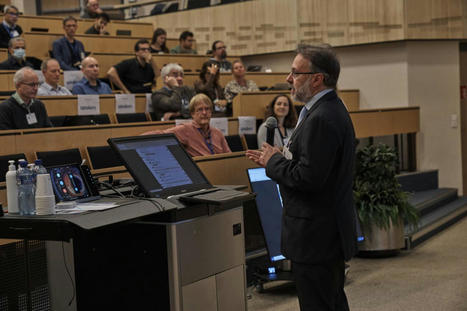

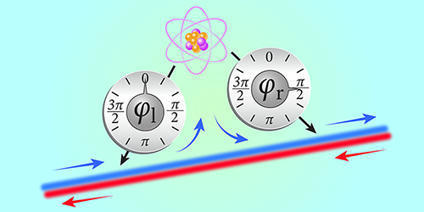


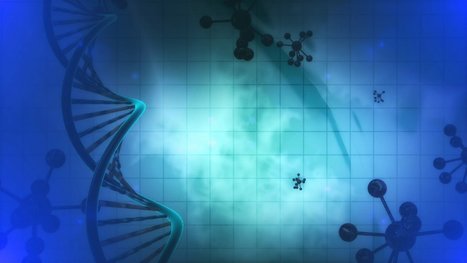

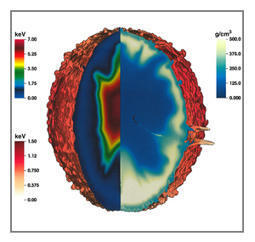

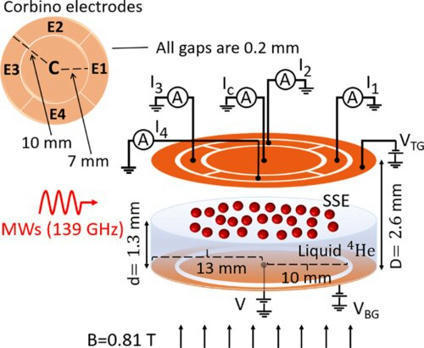
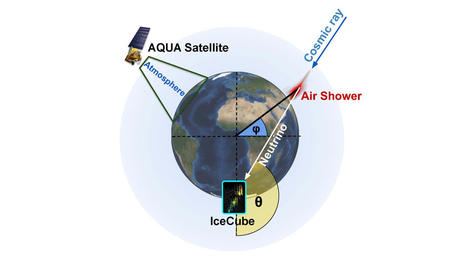

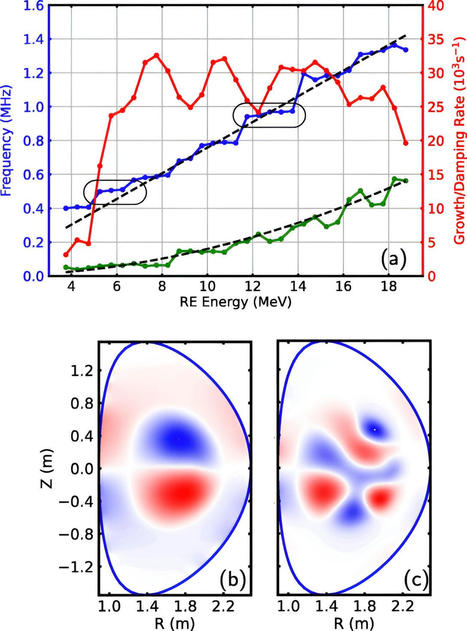




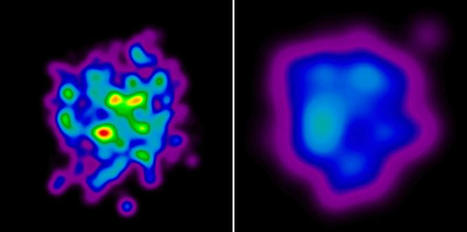
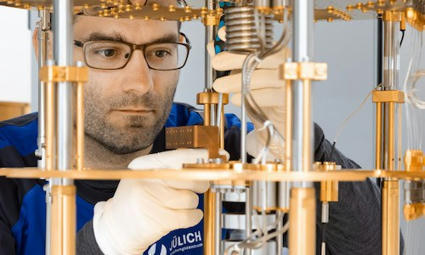










Oxycodone without a prescription
Phentermine 37.5 mg for sale
Phentremin weight loss
purchase Adderall online
Where Fentanyl Patches online
Where to buy Acxion Fentermina